Abstract
Proteoglycan in foetal- and adult-rat tail tendon and adult-rabbit achilles tendon was stained for electron microscopy with a cationic phthalocyanin-like dye, based on cinchomeronic acid, in a 'critical electrolyte concentration' method [Scott (1973) Biochem. Soc. Trans. 1, 787-806). Provided that the tissue was fixed with glutaraldehyde or formaldehyde, regular orthogonal perifibrillar arrays of filamentous material (proteoglycan) were observed, but no intra-fibrillar proteoglycan was seen. Specific proteoglycan-collagen interactions are inferred, and a model is proposed. Without fixation, the filamentous arrays disaggregated in the MgCl2 solutions (0.3 M) used during staining. End-to-end proteoglycan aggregation is implied. Tendon and cartilage are compared. Problems of electron-histochemical localization of extended space-filling polyanions by the use of cationic electron-dense precipitants are discussed, particularly polyanion-domain collapse, specificity of staining and fixation. A two-stage staining procedure that markedly enhances contrast is described, based on the multivalent nature of the dye, and the consequent anion-exchange properties of the dye-polyanion complex.
Full text
PDF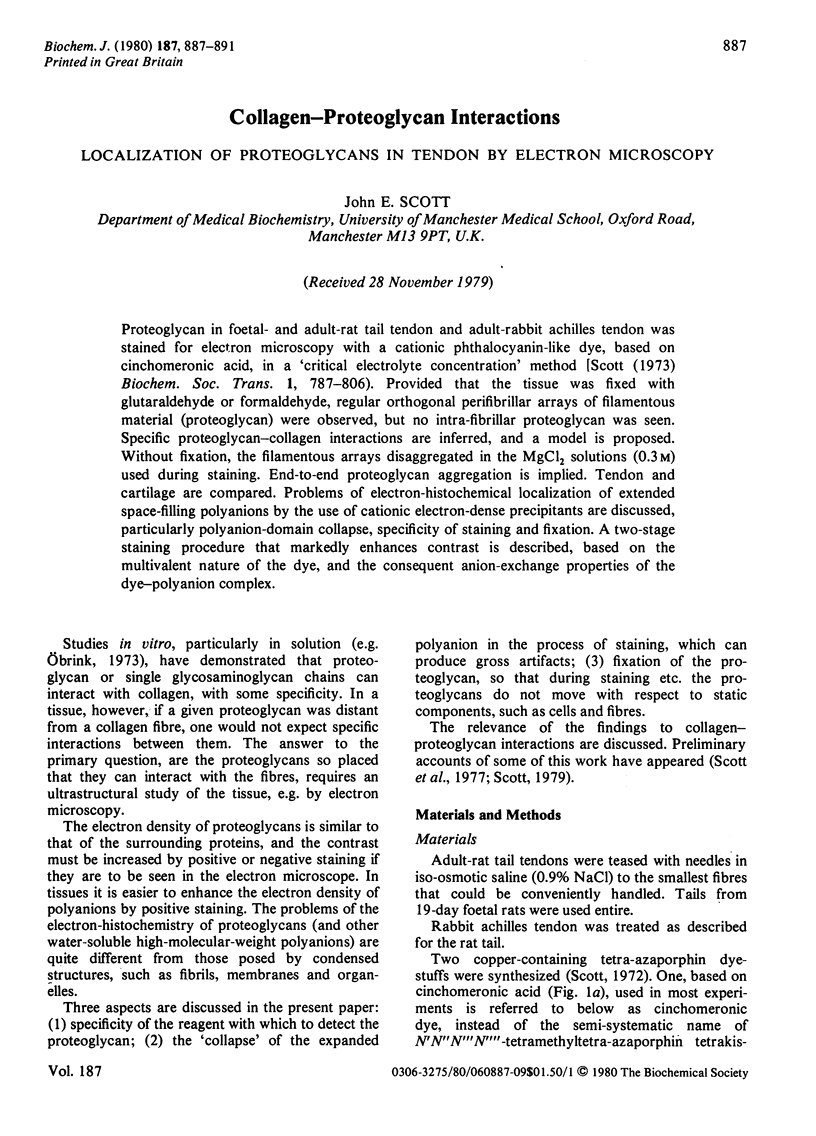
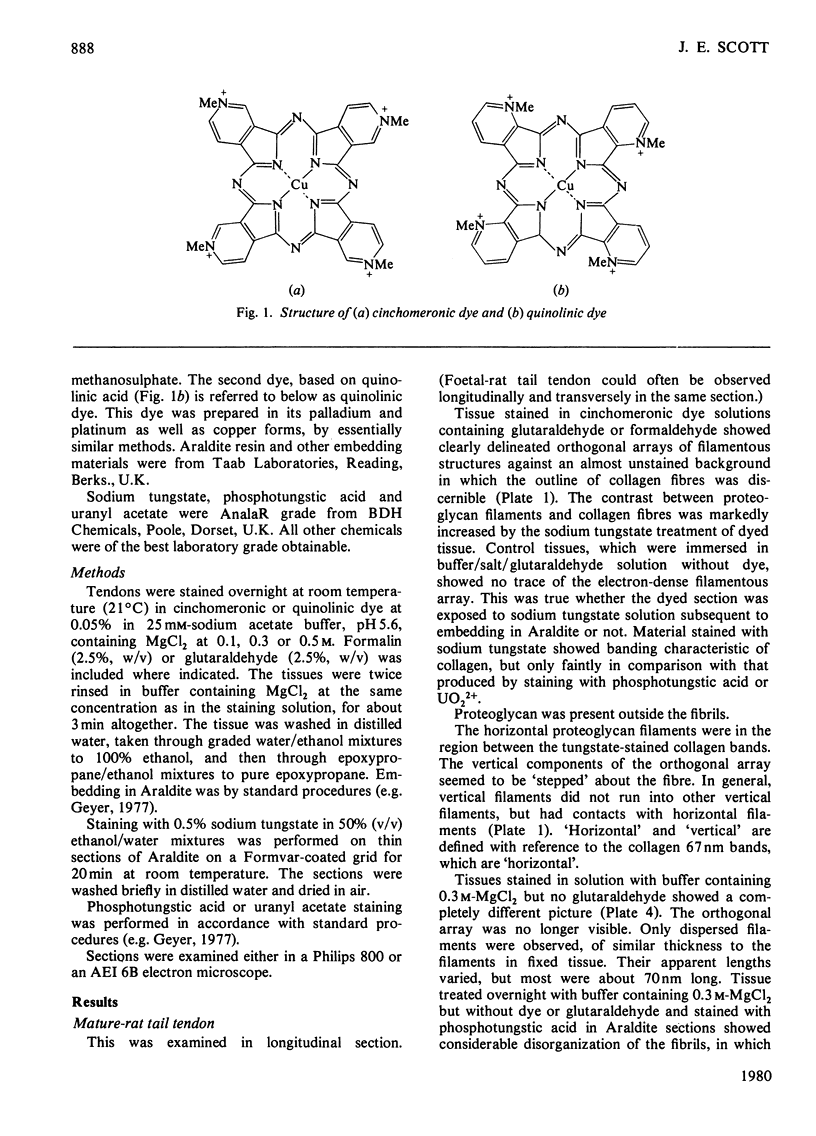
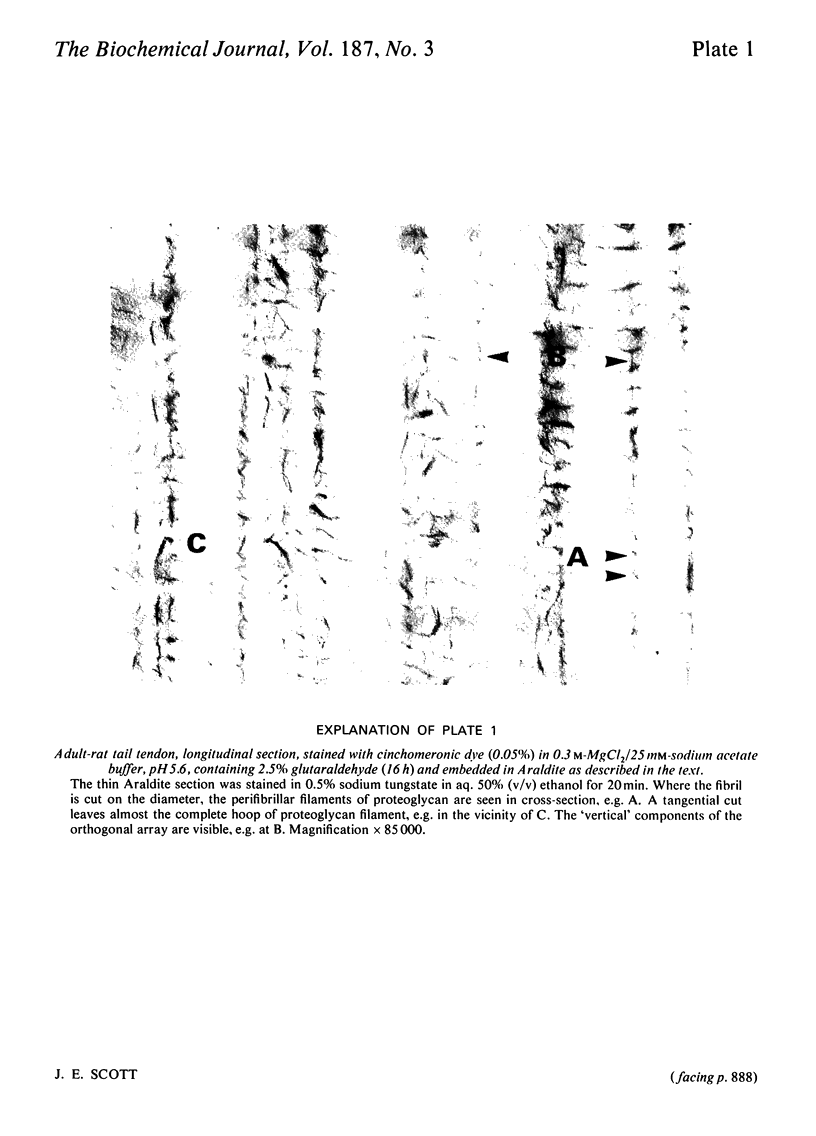
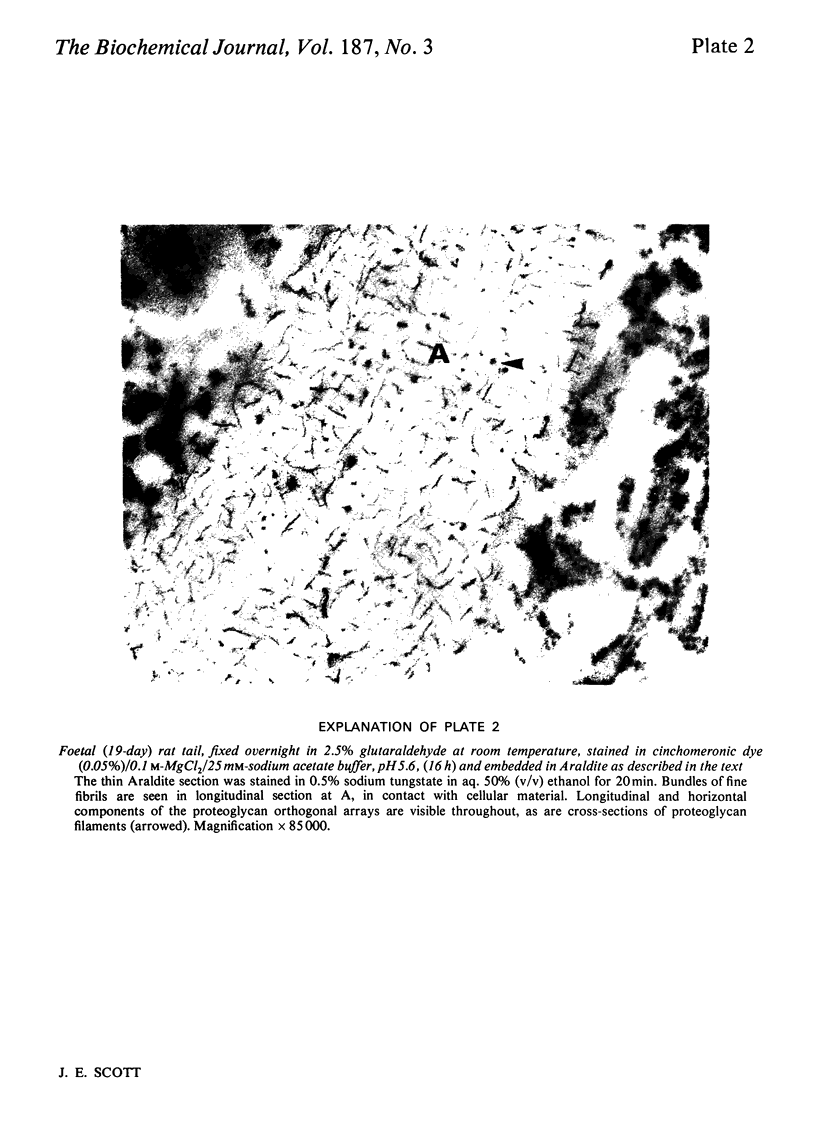
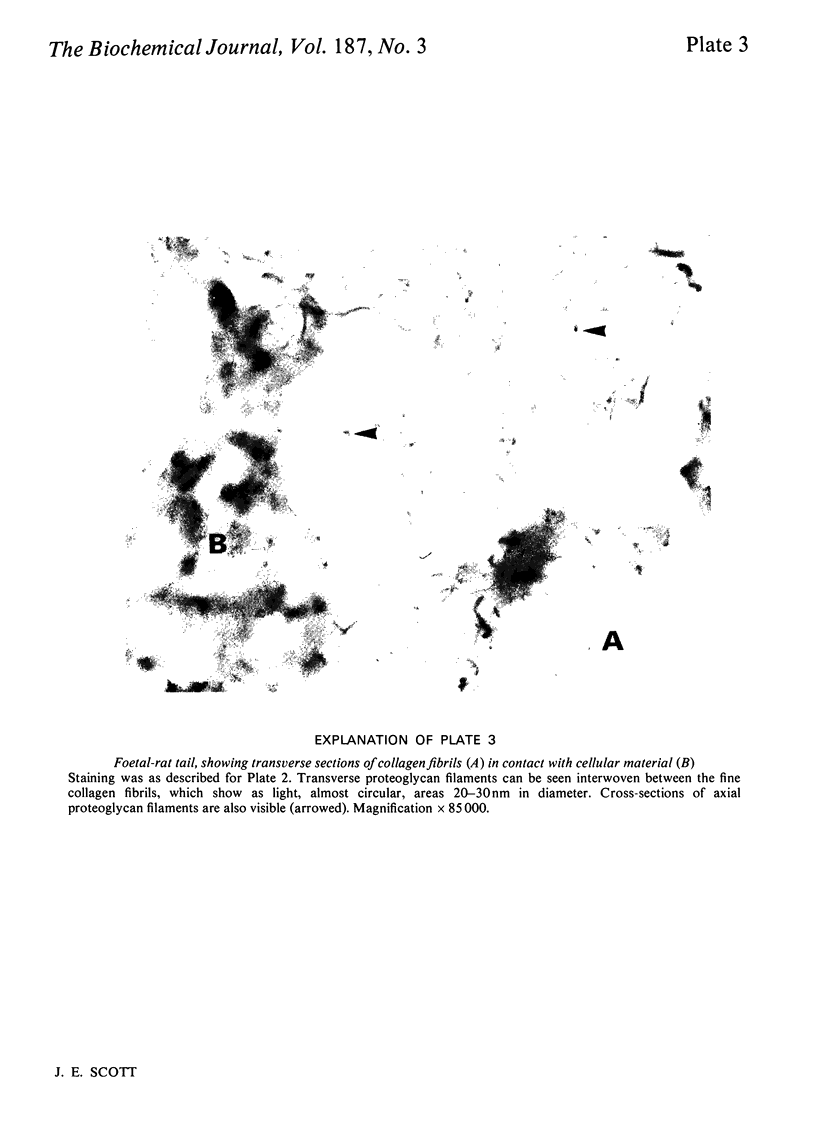

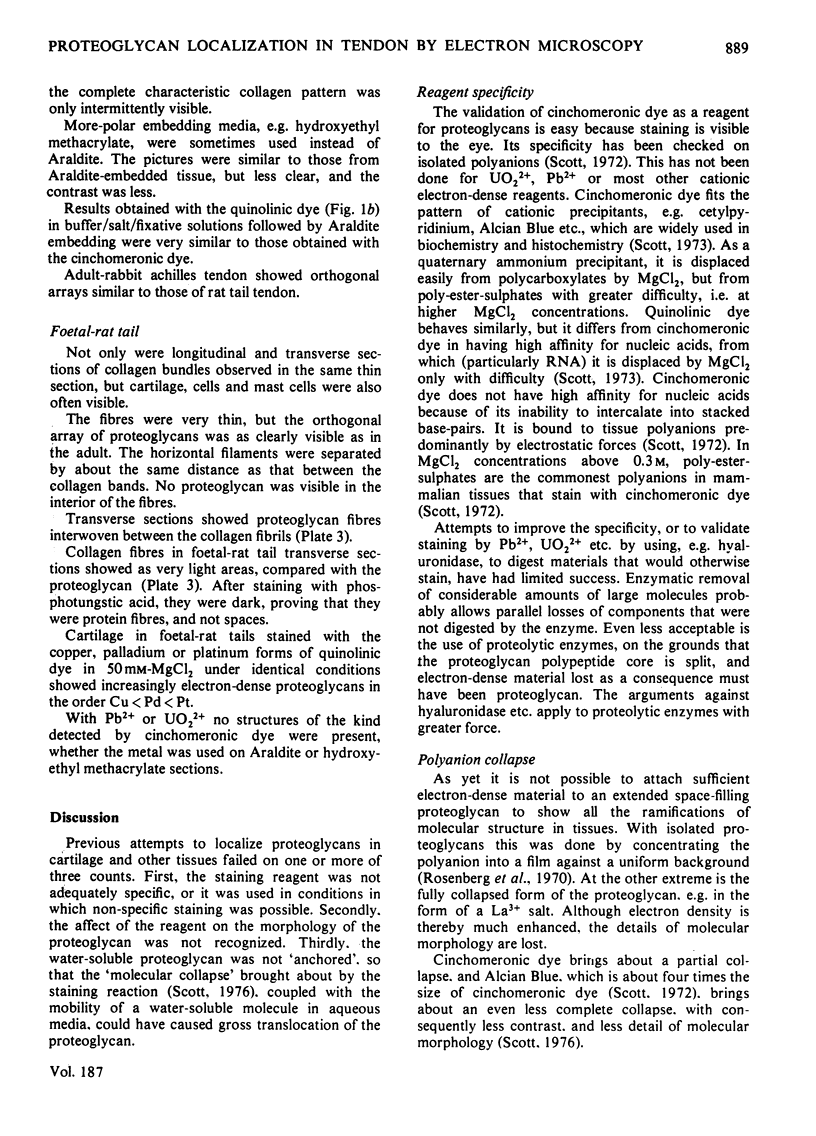
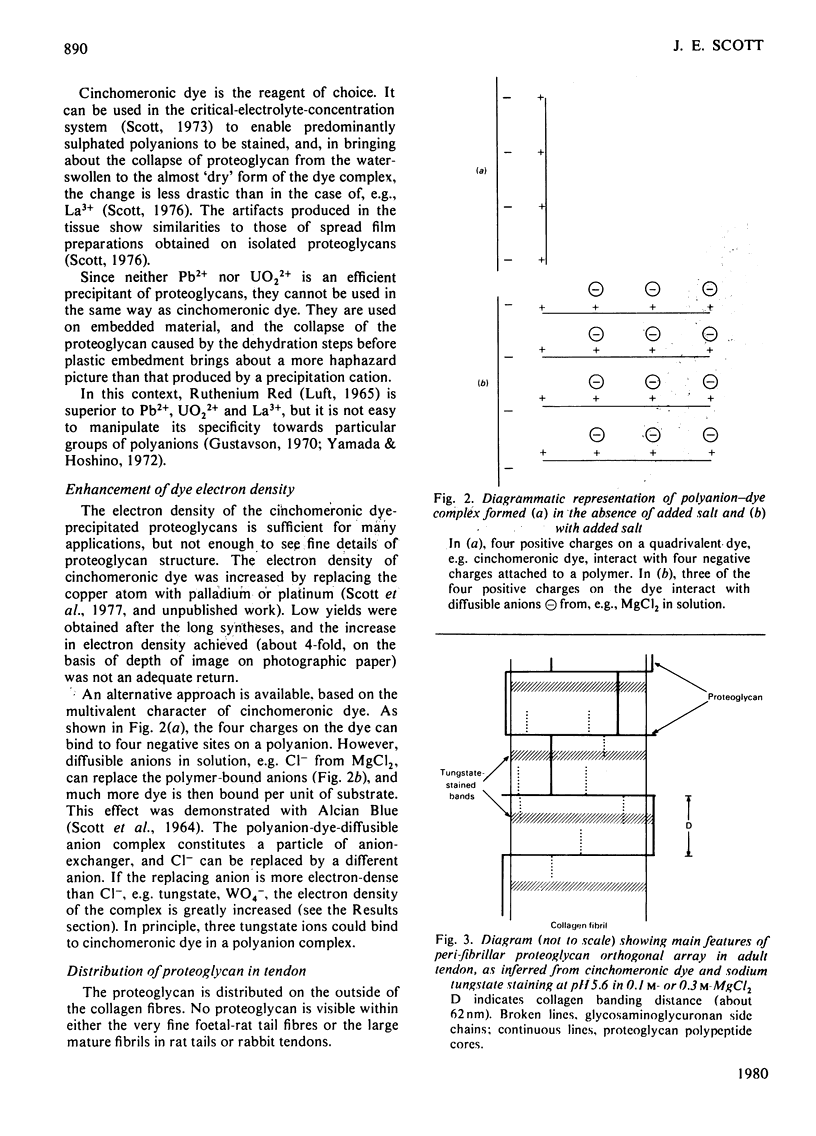
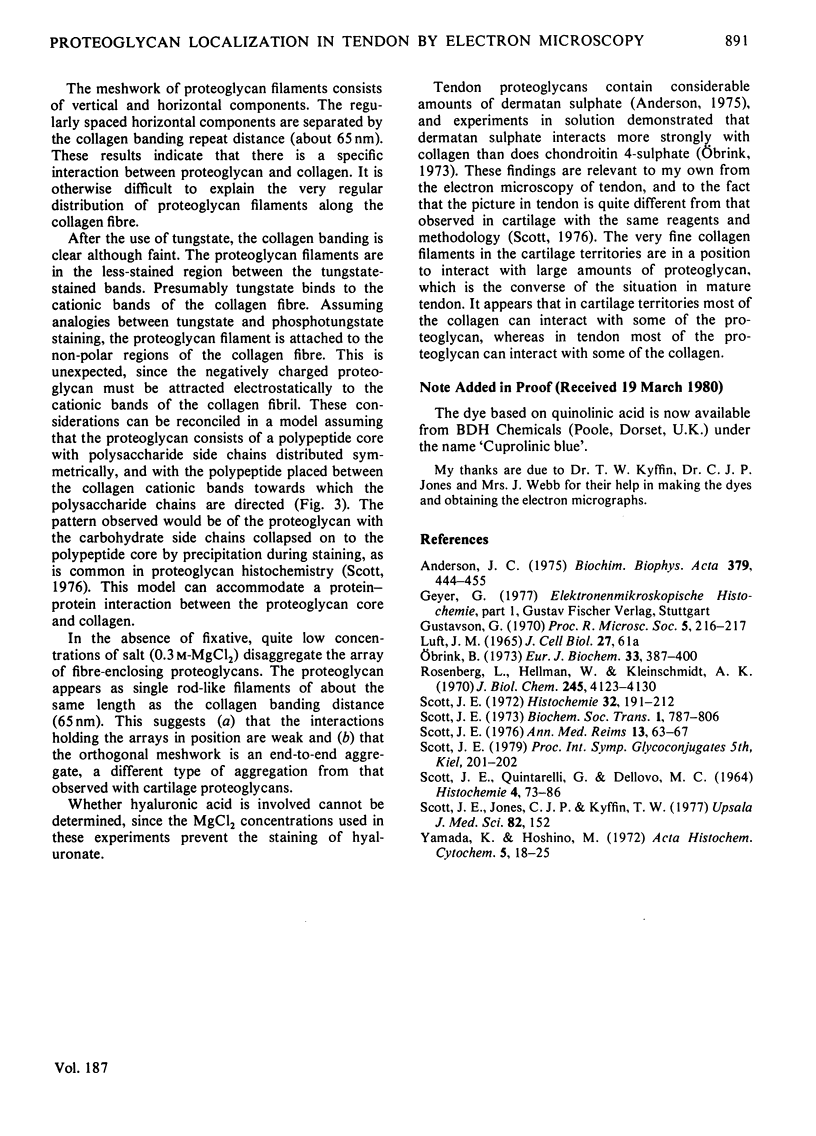
Images in this article
Selected References
These references are in PubMed. This may not be the complete list of references from this article.
- Anderson J. C. Isolation of a glycoprotein and proteodermatan sulphate from bovine achilles tendon by affinity chromatography on concanavalin A-Sepharose. Biochim Biophys Acta. 1975 Feb 27;379(2):444–455. doi: 10.1016/0005-2795(75)90151-8. [DOI] [PubMed] [Google Scholar]
- Obrink B. A study of the interactions between monomeric tropocollagen and glycosaminoglycans. Eur J Biochem. 1973 Mar 1;33(2):387–400. doi: 10.1111/j.1432-1033.1973.tb02695.x. [DOI] [PubMed] [Google Scholar]
- Quintarelli G., Scott J. E., Dellovo M. C. The chemical and histochemical properties of Alcian Blue. II. Dye binding of tissue polyanions. Histochemie. 1964 Jul 17;4(2):86–98. doi: 10.1007/BF00306150. [DOI] [PubMed] [Google Scholar]
- Rosenberg L., Hellmann W., Kleinschmidt A. K. Macromolecular models of proteinpolysaccharides from bovine nasal cartilage based on electron microscopic studies. J Biol Chem. 1970 Aug 25;245(16):4123–4130. [PubMed] [Google Scholar]
- Scott J. E. Histochemistry of Alcian blue. 3. The molecular biological basis of staining by Alcian blue 8GX and analogous phthalocyanins. Histochemie. 1972;32(3):191–212. doi: 10.1007/BF00306028. [DOI] [PubMed] [Google Scholar]






